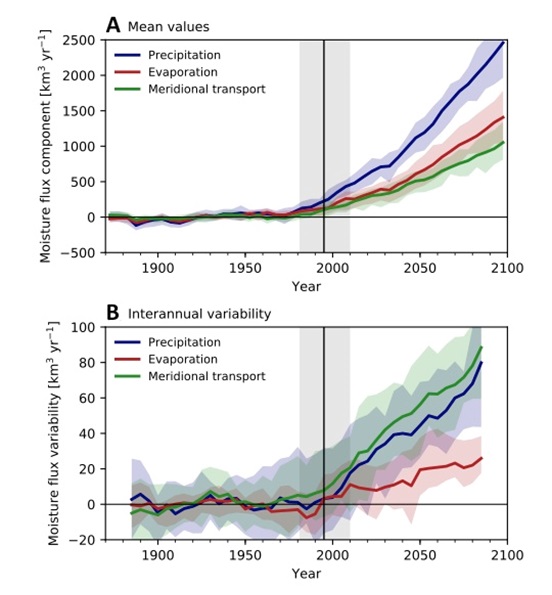Strong increase in year-to-year variation in Arctic precipitation
Recent research shows that, on average, more precipitation will fall in the Arctic region due to global warming. Initially this will mainly take the form of snow; after continued warming, this will turn into rain. A new article from UG climatologist Prof. Richard Bintanja and his colleagues from the Royal Netherlands Meteorological Institute (KNMI), Wageningen University and Research (WUR) and Delft University of Technology (TU Delft), which was published in Science Advances, shows that the year-to-year variation in precipitation will also strongly increase. This increase has a very different cause than the average increase in Arctic precipitation.
Year-to-year fluctuations are very important for extremes in both weather and climate, meaning they are also important for the consequences of climate change. An especially wet, dry, cold or warm year usually has a larger impact than several subsequent ‘regular’ years. All climate changes, including changes in variability, are much more significant in the Arctic region than in the rest of the world – and the possible consequences will be felt both in the Arctic and in the more moderate latitudes.
Moisture transport
Based on the newest climate models, research shows that future fluctuations in precipitation will strongly increase and that this is caused by atmospheric moisture transport to the Arctic. This forms a strong contrast with the average precipitation, which is mostly caused by the increase in vaporization and the decrease in sea ice in the Arctic itself. Notably, this means that changes in average precipitation are caused by local processes in the Arctic, while the increase in fluctuations is driven by the more moderate latitudes.
Wetter years
Richard Bintanja: ‘Based on these remarkable results, we conclude that the wet years in the Arctic will be much wetter in the future. This is not just caused by the average increase in precipitation but especially by the strong increase in year-to-year variations.’ It should be noted that future changes in climate variability are less certain than those in the average climate. ‘Although the precipitation variability in the Arctic region increases in all climate models, the extent to which this does so strongly depends on the model used.’

More news
-
02 December 2025
Student Menna Zahran wins Unilever Research Prize
-
27 November 2025
Aeroplane spotting using a radio telescope
-
26 November 2025
Why are shiny colours rare yet widespread in nature?
